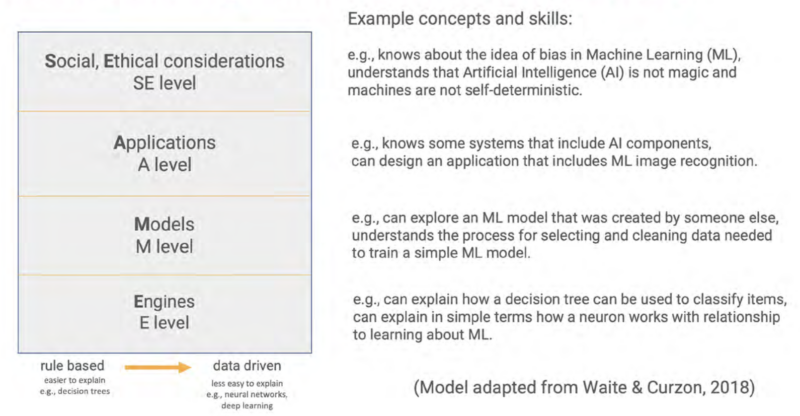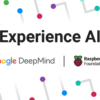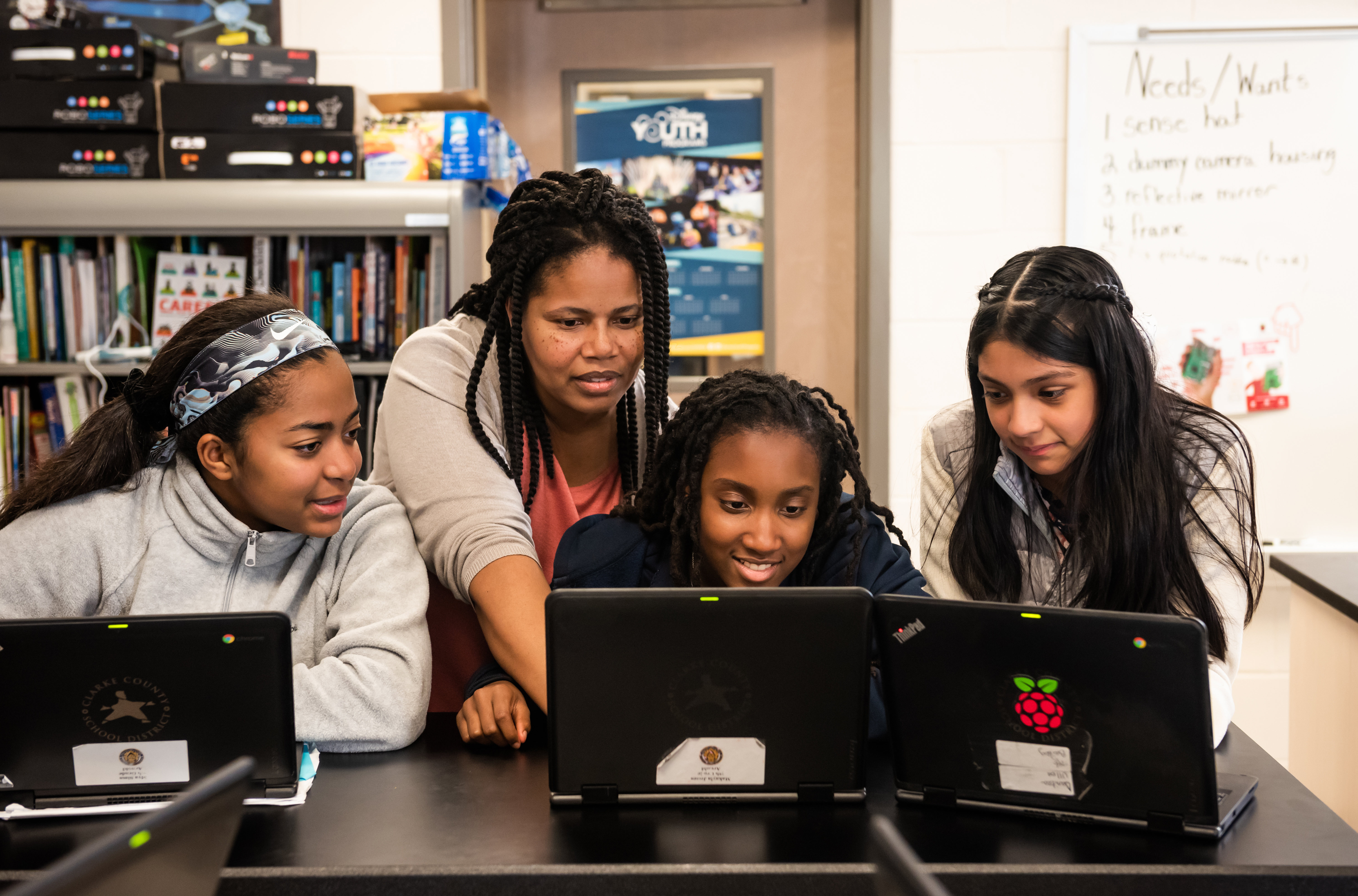Free online course on understanding AI for educators
To empower every educator to confidently bring AI into their classroom, we’ve created a new online training course called ‘Understanding AI for educators’ in collaboration with Google DeepMind. By taking this course, you will gain a practical understanding of the crossover between AI tools and education. The course includes a conceptual look at what AI is, how AI systems are built, different approaches to problem-solving with AI, and how to use current AI tools effectively and ethically.

In this post, I will share our approach to designing the course and some of the key considerations behind it — all of which you can apply today to teach your learners about AI systems.
Design decisions: Nurturing knowledge and confidence
We know educators have different levels of confidence with AI tools — we designed this course to help create a level playing field. Our goal is to uplift every educator, regardless of their prior experience, to a point where they feel comfortable discussing AI in the classroom.

AI literacy is key to understanding the implications and opportunities of AI in education. The course provides educators with a solid conceptual foundation, enabling them to ask the right questions and form their own perspectives.
As with all our AI learning materials that are part of Experience AI, we’ve used specific design principles for the course:
- Choosing language carefully: We never anthropomorphise AI systems, replacing phrases like “The model understands” with “The model analyses”. We do this to make it clear that AI is just a computer system, not a sentient being with thoughts or feelings.
- Accurate terminology: We avoid using AI as a singular noun, opting instead for the more accurate ‘AI tool’ when talking about applications or ‘AI system’ when talking about underlying component parts.
- Ethics: The social and ethical impacts of AI are not an afterthought but highlighted throughout the learning materials.
Three main takeaways
The course offers three main takeaways any educator can apply to their teaching about AI systems.
1. Communicating effectively about AI systems
Deciding the level of detail to use when talking about AI systems can be difficult — especially if you’re not very confident about the topic. The SEAME framework offers a solution by breaking down AI into 4 levels: social and ethical, application, model, and engine. Educators can focus on the level most relevant to their lessons and also use the framework as a useful structure for classroom discussions.

You might discuss the impact a particular AI system is having on society, without the need to explain to your learners how the model itself has been trained or tested. Equally, you might focus on a specific machine learning model to look at where the data used to create it came from and consider the effect the data source has on the output.
2. Problem-solving approaches: Predictive vs. generative AI
AI applications can be broadly separated into two categories: predictive and generative. These two types of AI model represent two vastly different approaches to problem-solving.
People create predictive AI models to make predictions about the future. For example, you might create a model to make weather forecasts based on previously recorded weather data, or to recommend new movies to you based on your previous viewing history. In developing predictive AI models, the problem is defined first — then a specific dataset is assembled to help solve it. Therefore, each predictive AI model usually is only useful for a small number of applications.

Generative AI models are used to generate media (such as text, code, images, or audio). The possible applications of these models are much more varied because people can use media in many different kinds of ways. You might say that the outputs of generative AI models could be used to solve — or at least to partially solve — any number of problems, without these problems needing to be defined before the model is created.
3. Using generative AI tools: The OCEAN process
Generative AI systems rely on user prompts to generate outputs. The OCEAN process, outlined in the course, offers a simple yet powerful framework for prompting AI tools like Gemini, Stable Diffusion or ChatGPT.

The first three steps of the process help you write better prompts that will result in an output that is as close as possible to what you are looking for, while the last two steps outline how to improve the output:
- Objective: Clearly state what you want the model to generate
- Context: Provide necessary background information
- Examples: Offer specific examples to fine-tune the model’s output
- Assess: Evaluate the output
- Negotiate: Refine the prompt to correct any errors in the output
The final step in using any generative AI tool should be to closely review or edit the output yourself. These tools will very quickly get you started but you’ll always have to rely on your own human effort to ensure the quality of your work.
Helping educators to be critical users
We believe the knowledge and skills our ‘Understanding AI for educators’ course teaches will help any educator determine the right AI tools and concepts to bring into their classroom, regardless of their specialisation. Here’s what one course participant had to say:
“From my inexperienced viewpoint, I kind of viewed AI as a cheat code. I believed that AI in the classroom could possibly be a real detriment to students and eliminate critical thinking skills.
After learning more about AI [on the course] and getting some hands-on experience with it, my viewpoint has certainly taken a 180-degree turn. AI definitely belongs in schools and in the workplace. It will take time to properly integrate it and know how to ethically use it. Our role as educators is to stay ahead of this trend as opposed to denying AI’s benefits and falling behind.” – ‘Understanding AI for educators’ course participant
All our Experience AI resources — including this online course and the teaching materials — are designed to foster a generation of AI-literate educators who can confidently and ethically guide their students in navigating the world of AI.
You can sign up to the course for free here:
A version of this article also appears in Hello World issue 25, which will be published on Monday 23 September and will focus on all things generative AI and education.







4 comments
Pamela azanfouet
I want to partner and bring the raspberry foundation in Cameroon most for the underserved schools in rural areas they deserved to be involved too there is a huge gap
Evans Njoro
Dear Pamela
I am the CEO at Futures Infinite Education, an implementing partner of RPF Code Clubs in Kenya, and would be happy to discuss collaborating on the Experience AI initiative.
But first, we will share this opportunity with our community of educators. Exciting!
Raspberry Pi Staff Jan Ander
That’s great to hear! If you fill in the ‘register your interest’ form linked at the bottom of the partners page on the Experience AI website, we will be in touch with you. https://experience-ai.org/en/partners
Ebby masaba
I want to thank the raspberry organizational for educating us on cording and scratch to teach young generations it has empowered the young ones know cording THANKS.